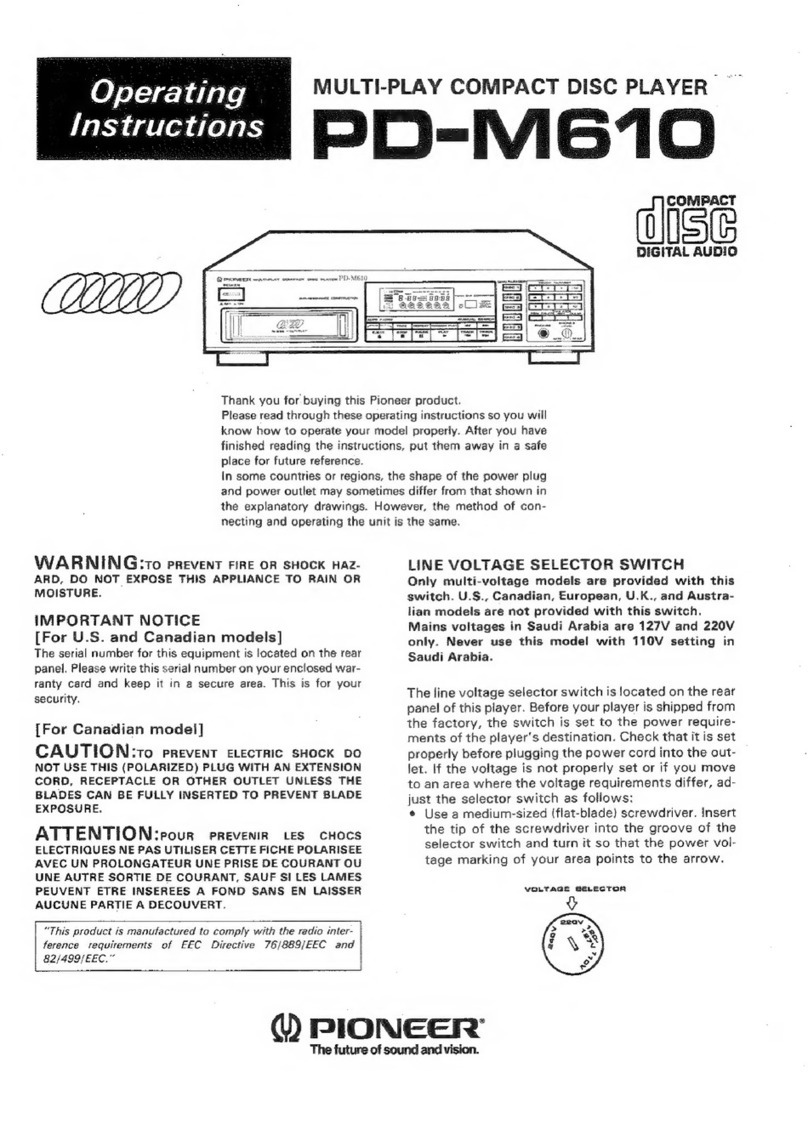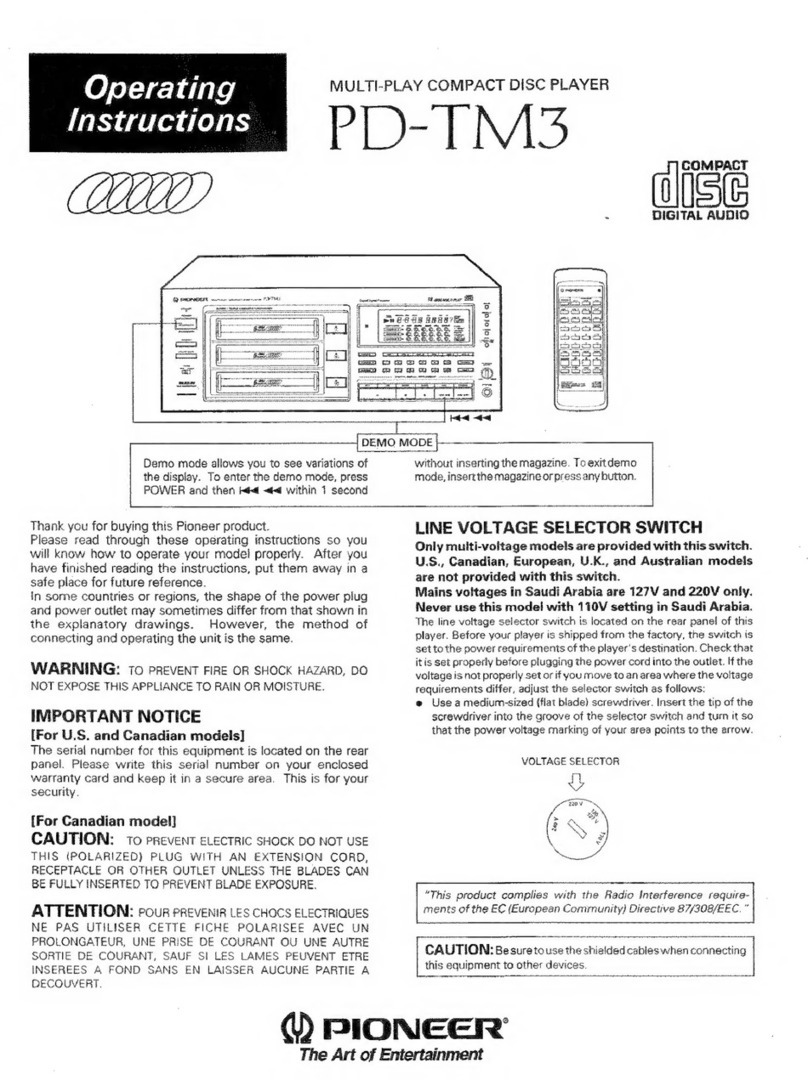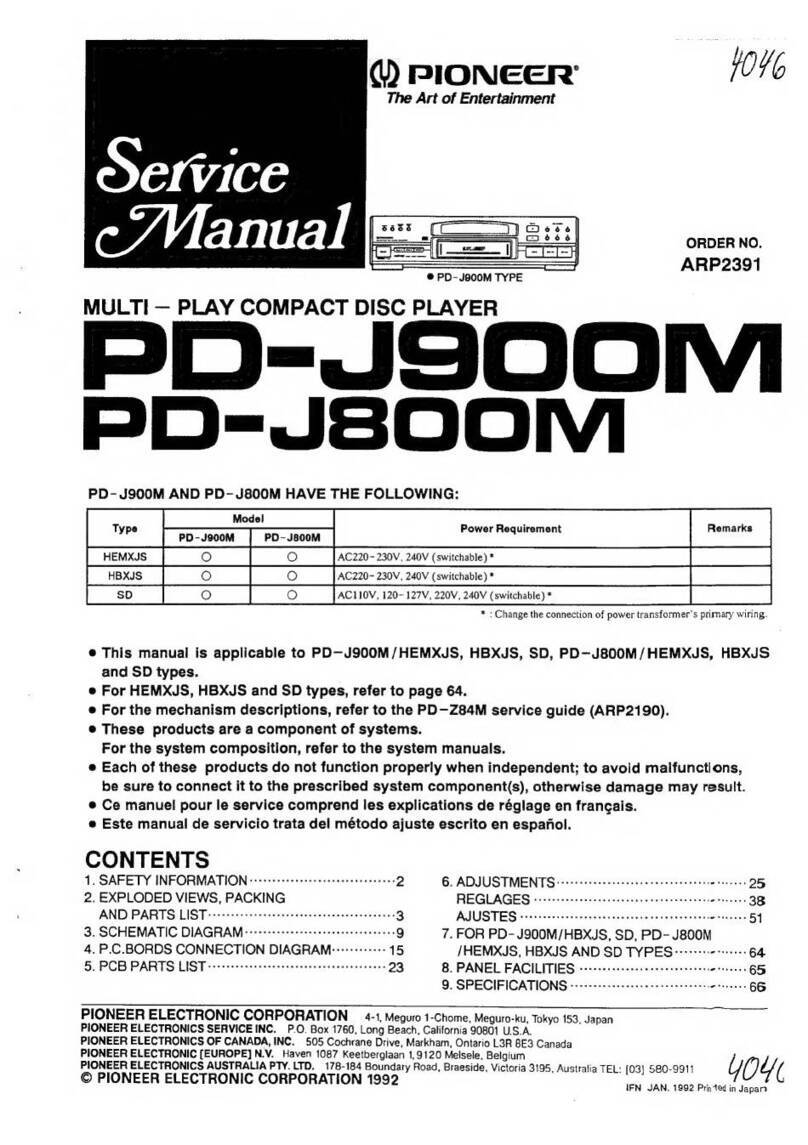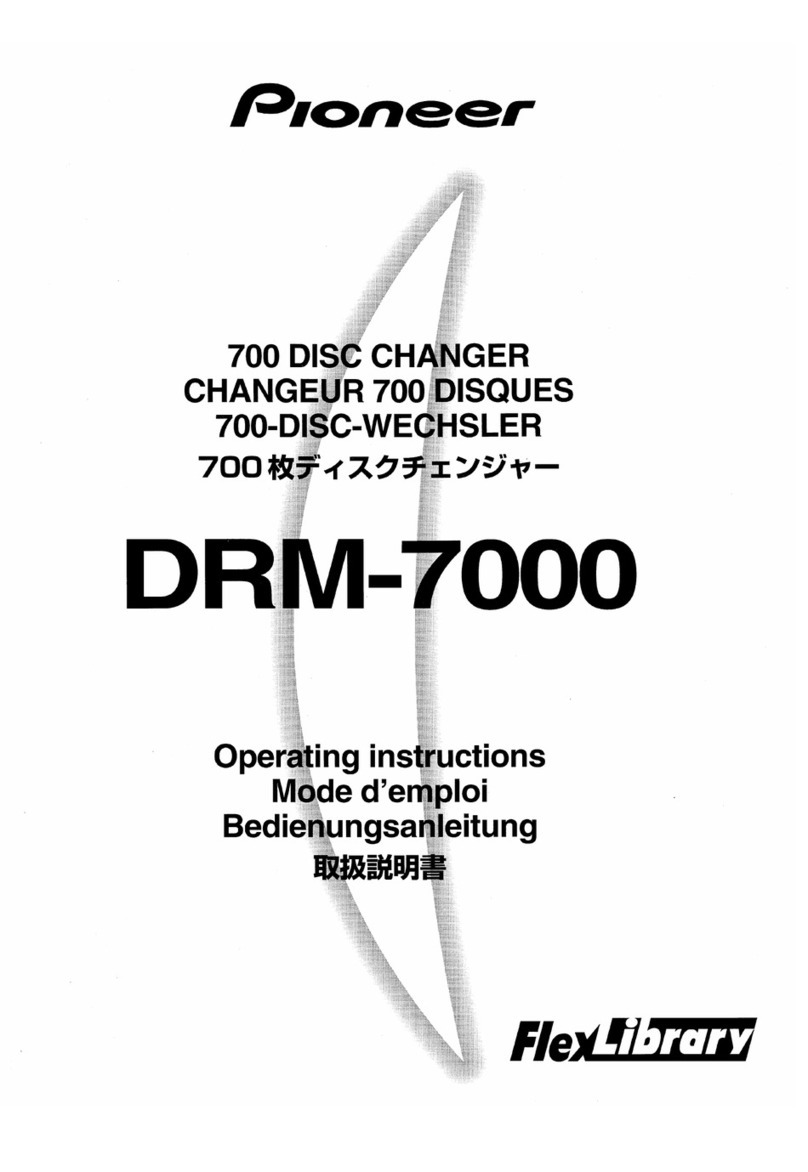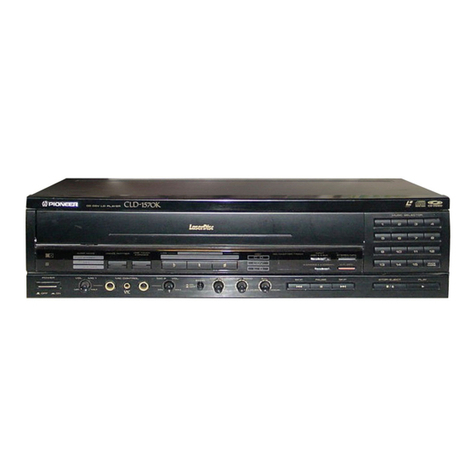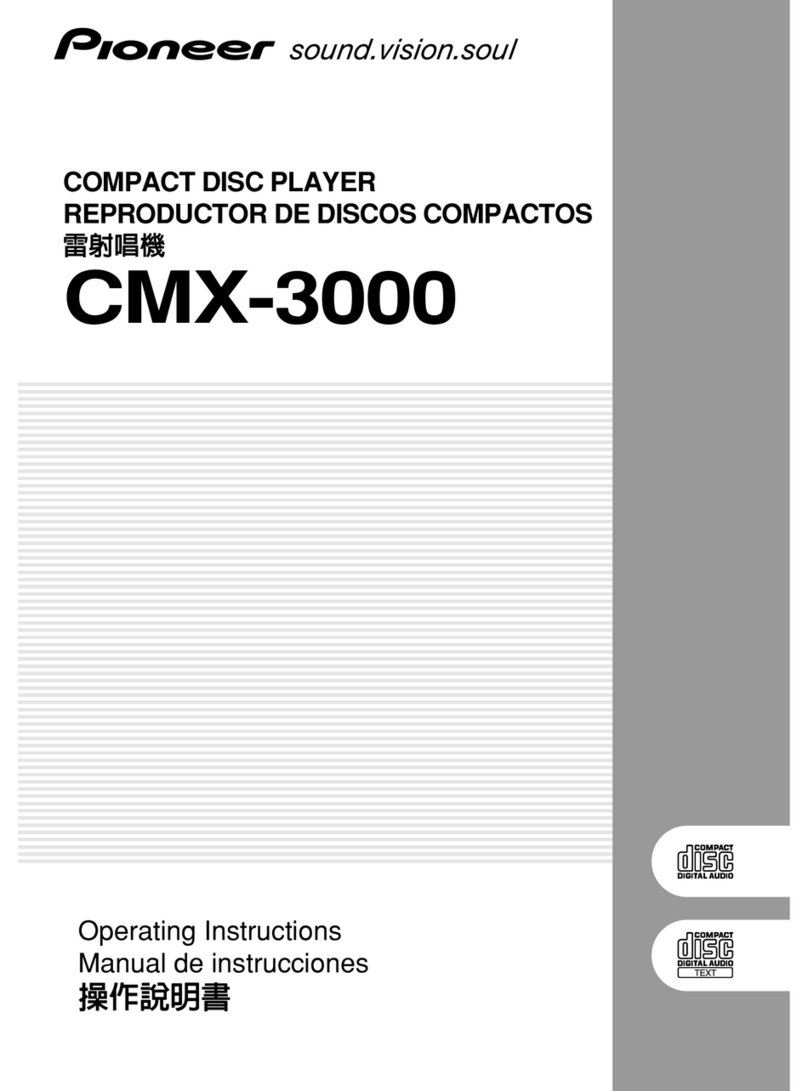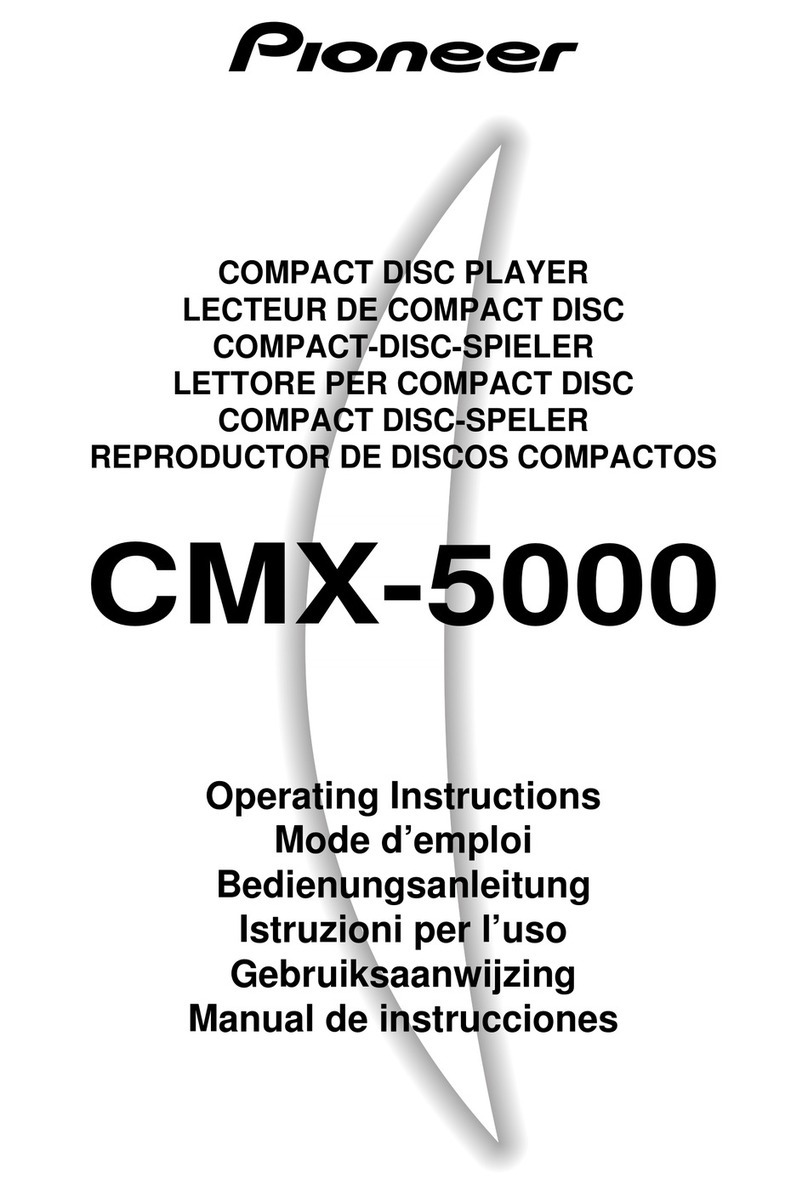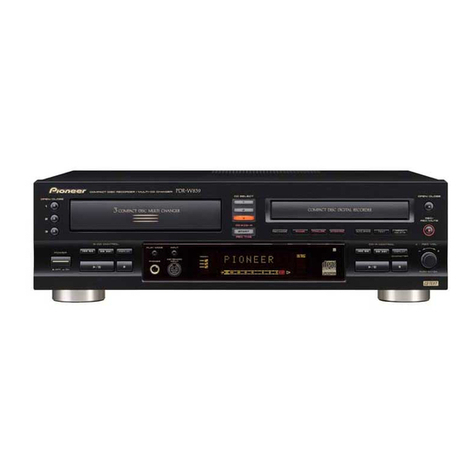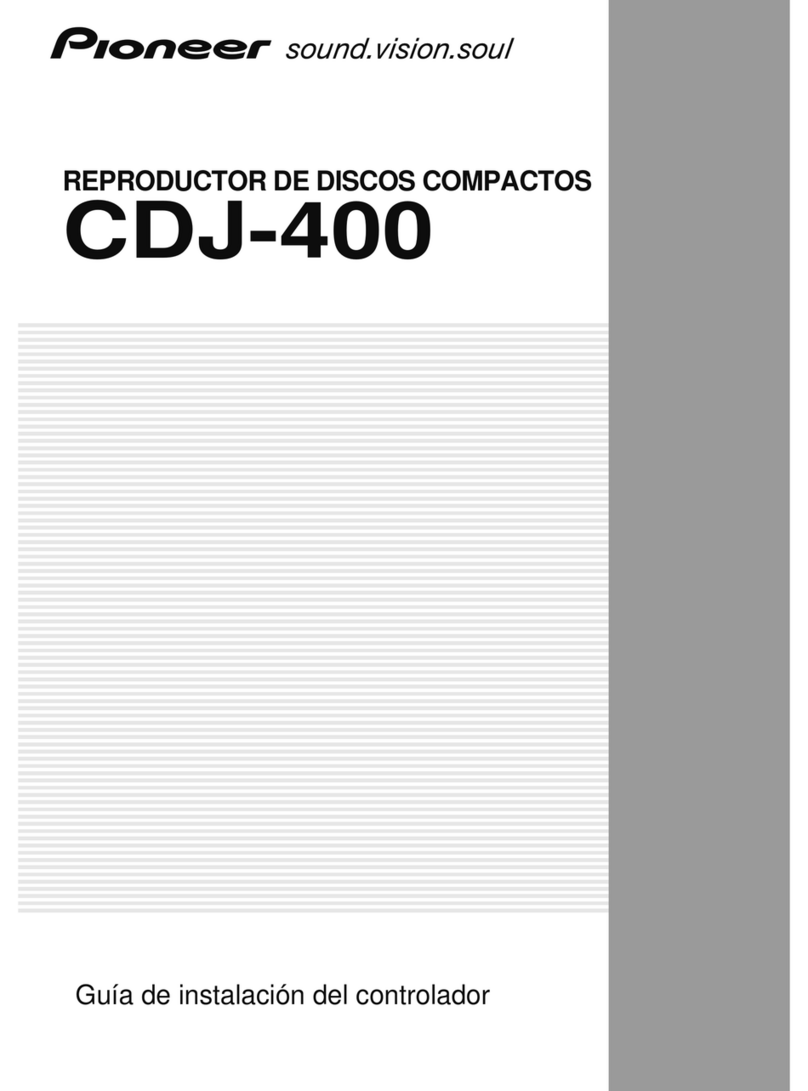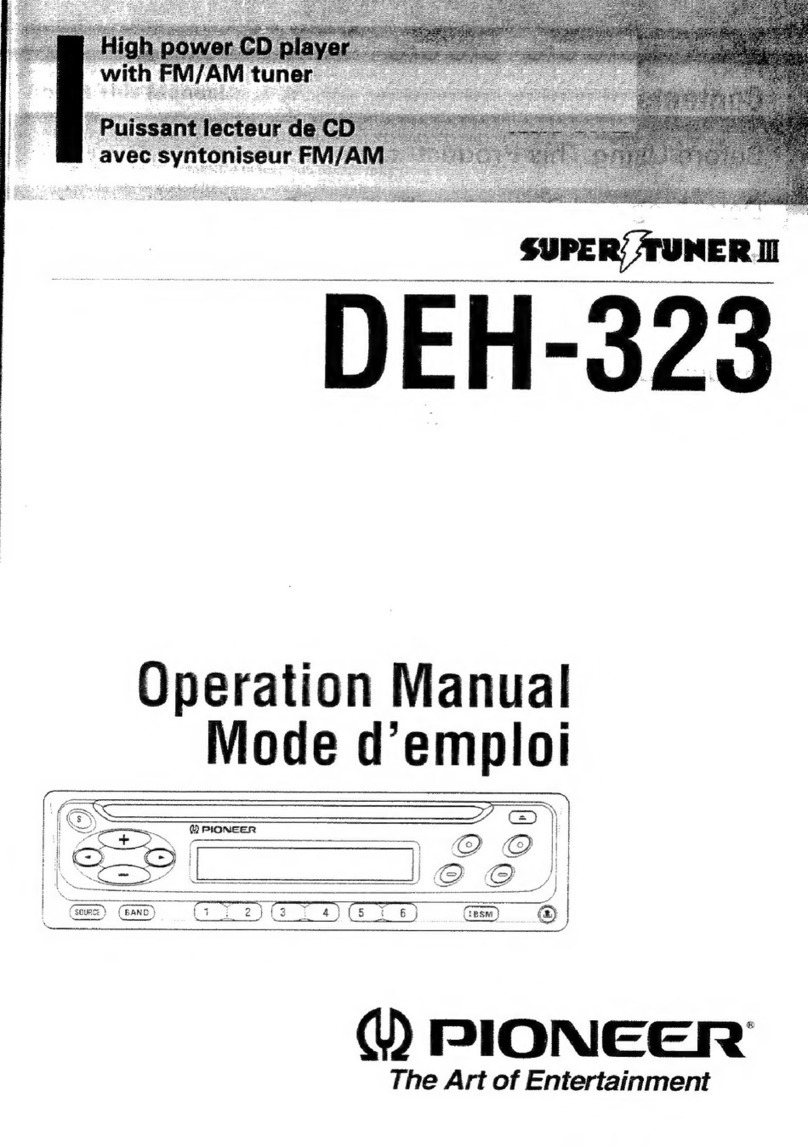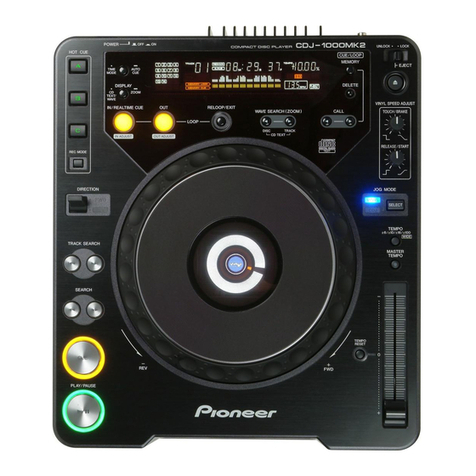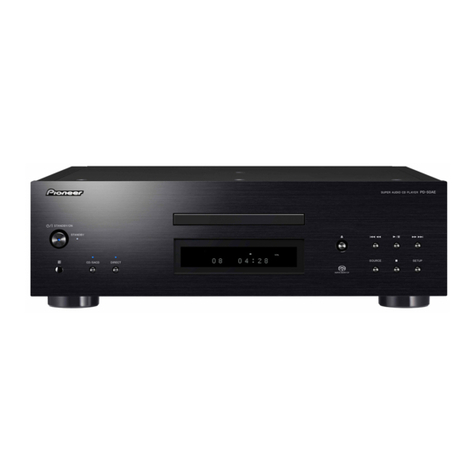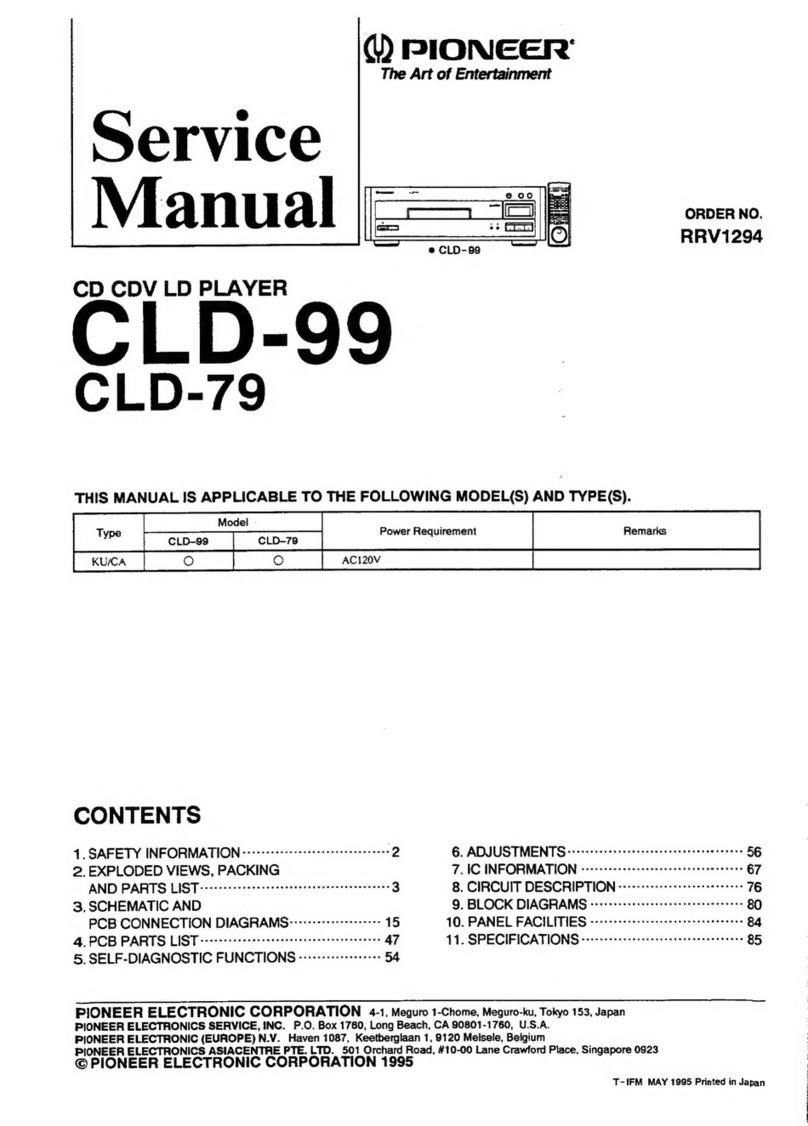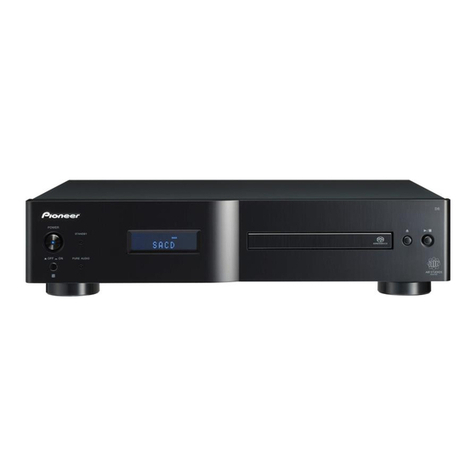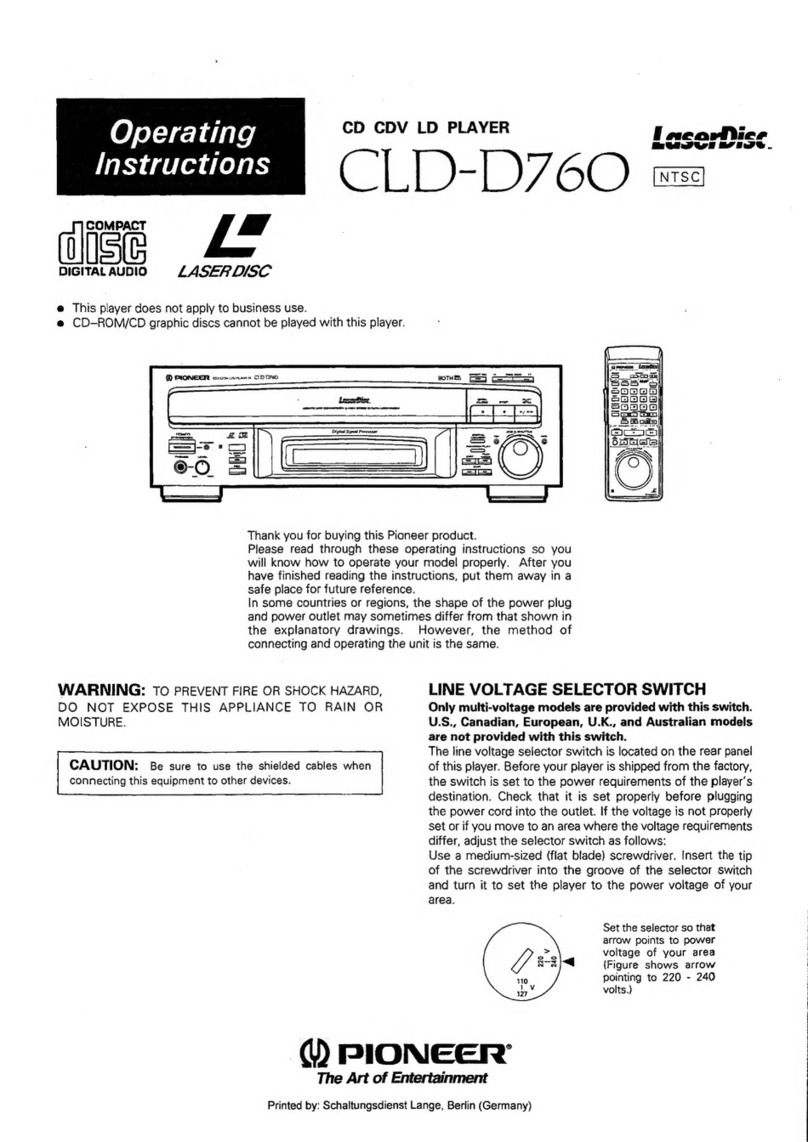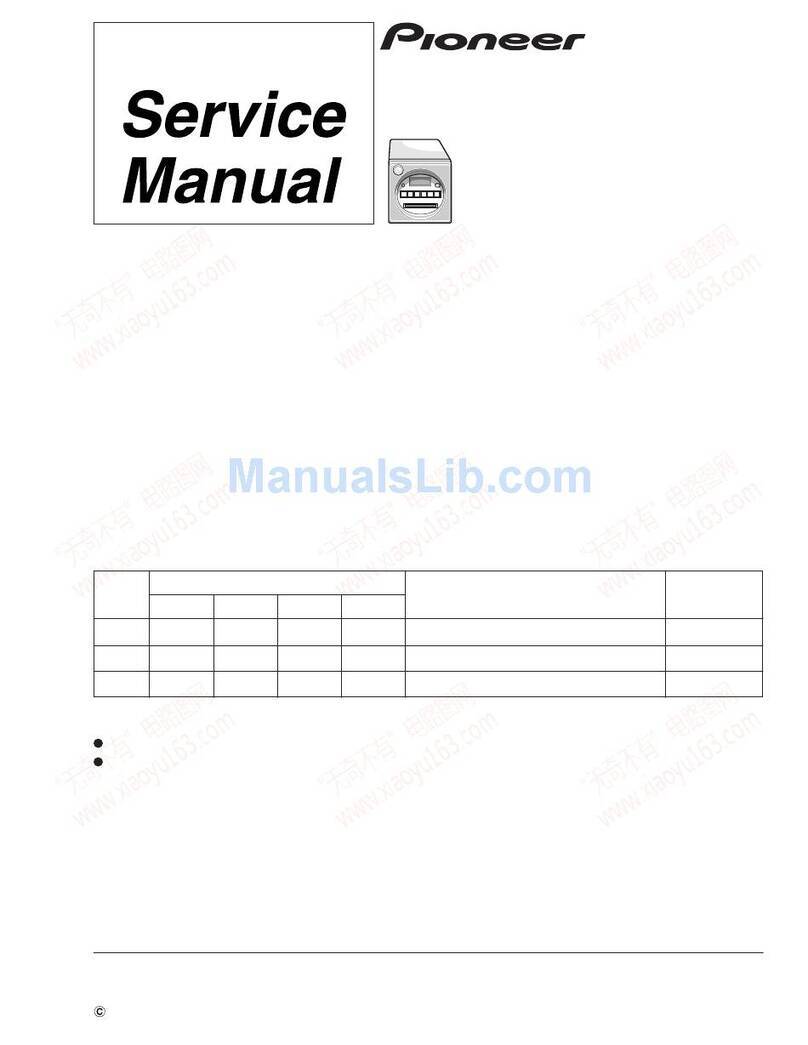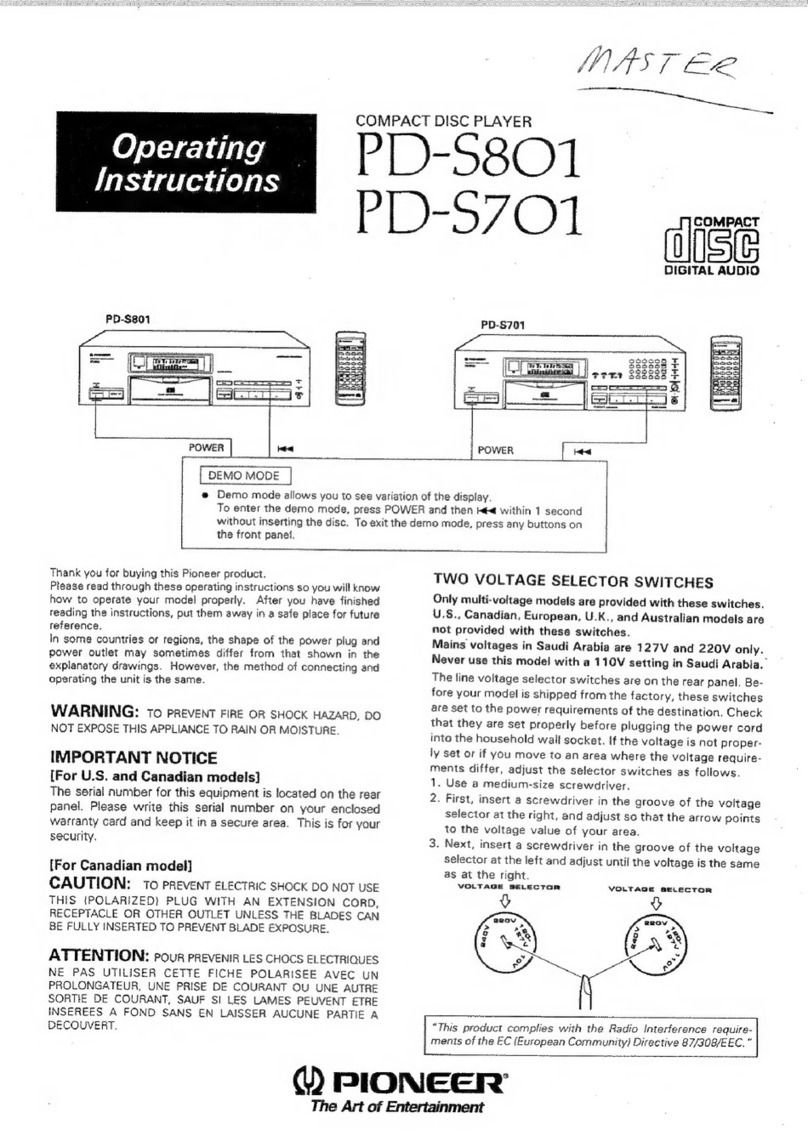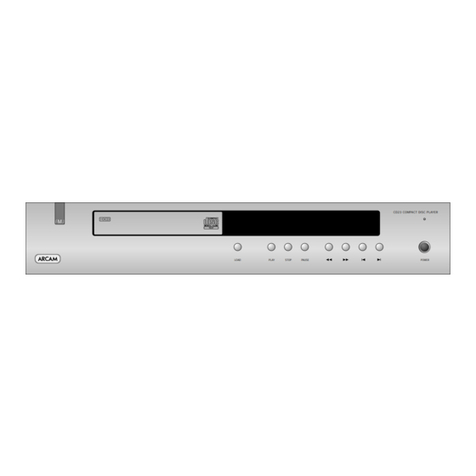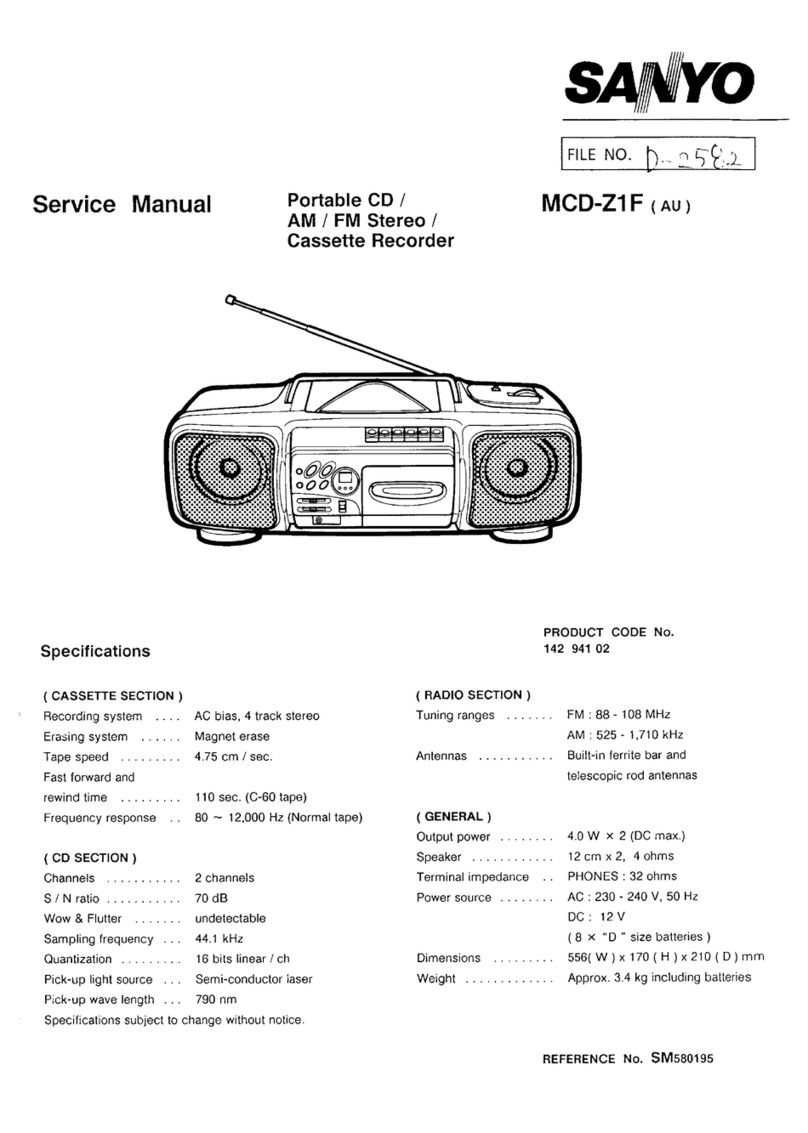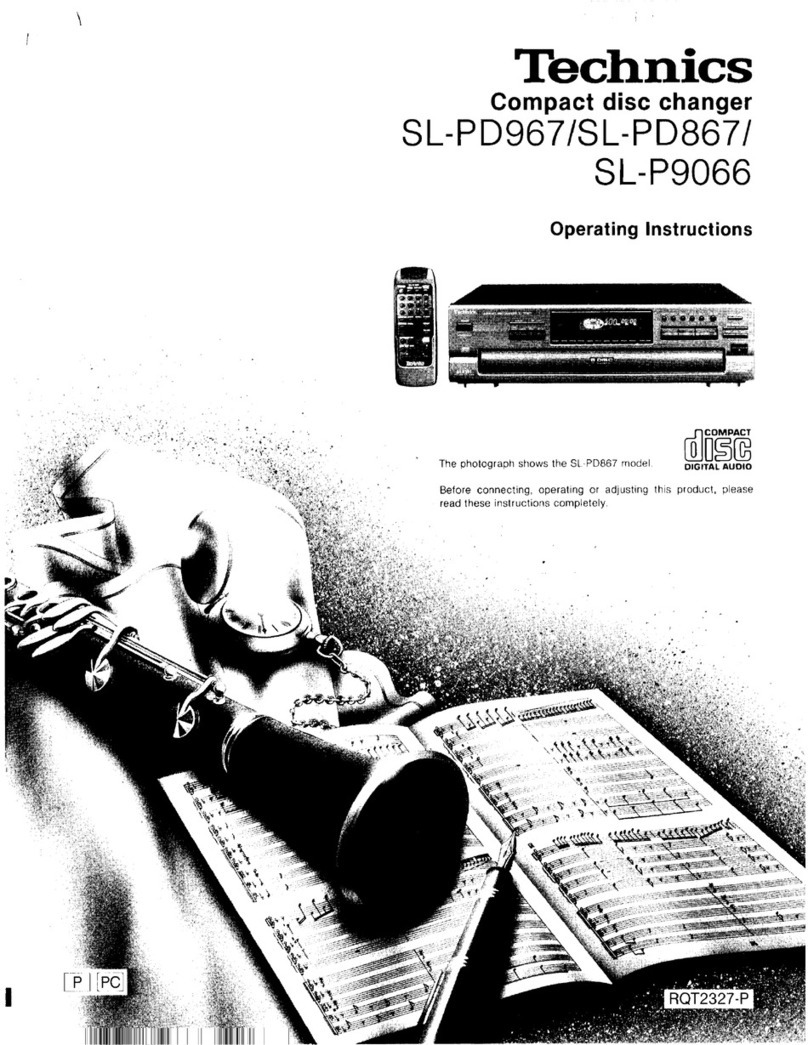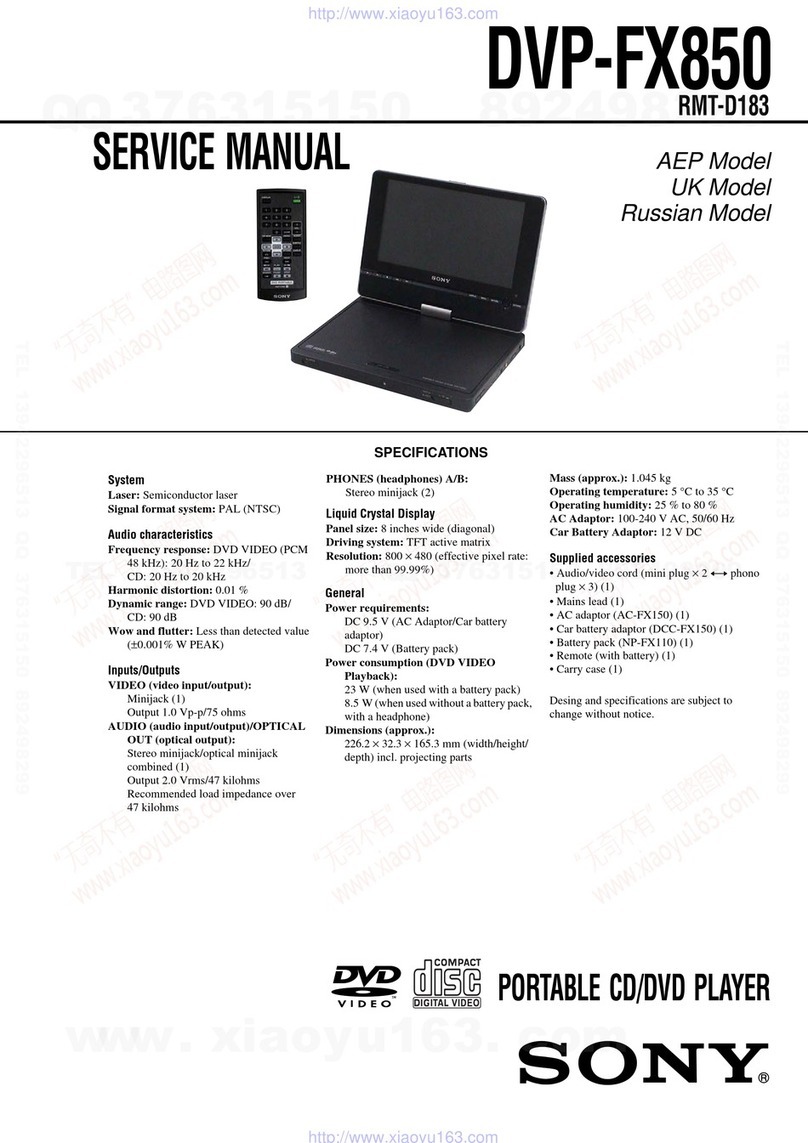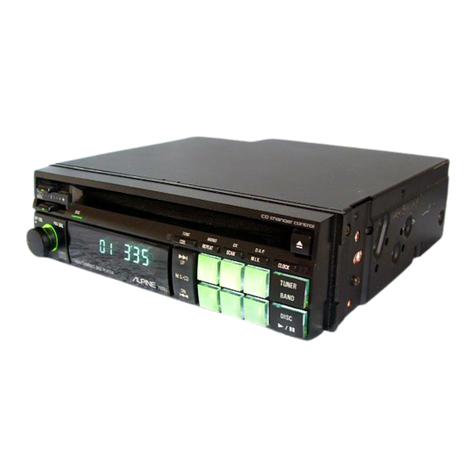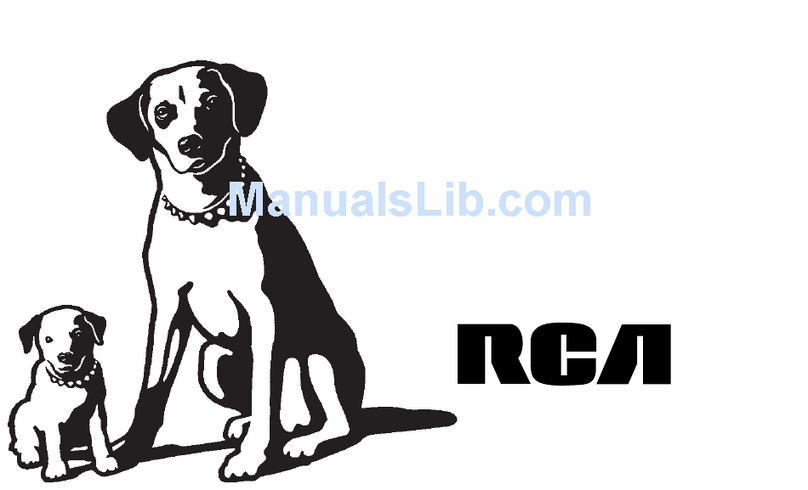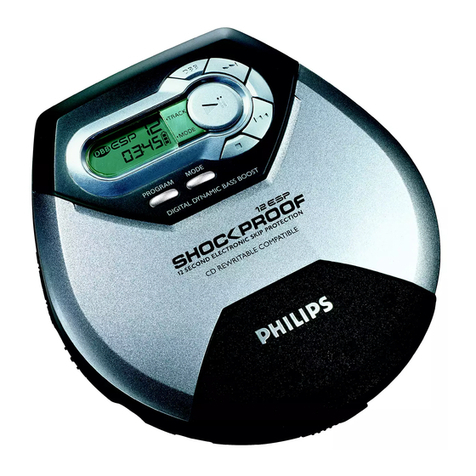
FO
ACUPOS
cescevesecti.icepigeeis
Ris
cess
icc
lacsedecesacdecscavedeealcevasseet
dntanes
DISCS
ices
tat
Ne
th
hee
ce
ves
SINE
Od.
Disc
Handling
Precautions
...........
cc
ceeeeeeeeseeeeeeeeeeees
Before
Operation
02...
cccecccesccsceeecescsseeseaceeseesessessseseess
Rear
Panel
Facilities
0.0.0...
cee
ceecseeecesereeeeees
CORRECTIONS
<2.
ccccccdecdiealbcks
hateavsesbve
ceceadeclucbecesedbeasessasiice
r
CONTENTS
Basic
Operation
.....2.
ce
cccccccecessssssssecssceeeeecesereeseers
Remote
Control
Operations
0.0...
ecceeeeeeeeeeeeeees
LaserVision
Disc
Playback
Functions
Compact
Disc
Playback
Functions
00.0.0...
Program
playback
oo...
.cecccececsesececssessescecssceseesneass
TrOUBDIESHOOTING
00...
ee
eceeeeseseeseseteesenecseesectecsecestacssease
Specifications
FEATURES
AUTOSTART
FUNCTION
WITH
AUTOMATIC
DISCRIMINATION
OF
COMPACT
DISC/LASER-
VISION
DISC
When
the
disc
table
with
a
disc
set
upon
it
is
drawn
into
the
player,
the
player
automatically
discriminates
the
type
of
disc
on
the
table,
and
begins
playback.
CX
NOISE
REDUCTION
SYSTEM
When
use
is
made
of
CX
encoded
LaserVision
discs,
an
expanded
dynamic
range
and
greatly
increased
signal
to
noise
ratio
are
obtained.
EXTERNAL
CONTROL
The
player
is
provided
with
an
I/O
PORT
and
control
input/output
terminals.
These
enable
it
to
be
con-
trolled
by
a
personal
computer,
or
to
be
connected
into
systems
comprising
products
with
the
PIONEER
mark.
CAN
PLAY
BACK
THE
DIGITAL
SOUND
OF
“LASERVISION
WITH
DIGITAL
SOUND
DISCS”
Can
play
back
the
digitally
recorded
sound
of
the
LaserVision
with
Digital
Sound
Discs.
There
is
no
need
for
any
extra
adaptor.
LINEAR
SERVO
SYSTEM
DURING
COMPACT
DISC
PLAYBACK
The
player
employs
a
linear
servo
system
in
which
any
scratches
or
dirt
are
detected
by
a
preceding
beam.
This
allows
jumping
of
playback
due
to
dirt
or
scratches
to
be
avoided.
WHEN
TRANSPORTING
THE
PLAYER,
Transport
the
Player
in
CD
Mode
When
moving
house
etc.,
transport
the
player
after
first
putting
it
into
Compact
Disc
playback
mode
(so
that
the
CDP
indicator
lights),
and
then
switching
off
power.
If
the
Player
is
Not
in
CD
Mode,
Insert
a
Compact
Disc,
and
when
the
CDP
indicator
lights,
eject
and
remove
the
disc.
Push
the
disc
table
back
into
the
player,
and
after
the
PLAY
indicator
stops
flashing,
switch
off
the
power.
After
the
PLAY
indicator
stops
flashing,
switch
off
the
power.
3
<VRB1001>
PERERA
RP
EO
PSI
ERE
SETS
FT
TTS
SI
ES
TSH
OA
RSET
CRRA
A
O
TT
RTSENOTS
PONIES
NOES
CHEATER
EARSTE
eT
PS
EET
Eo
PE
SETTERS
SSA
EST
SETS
ST
TE
SEI
LST
SE
TNS
CS
SSE
Fs
vs
4
a!
4
